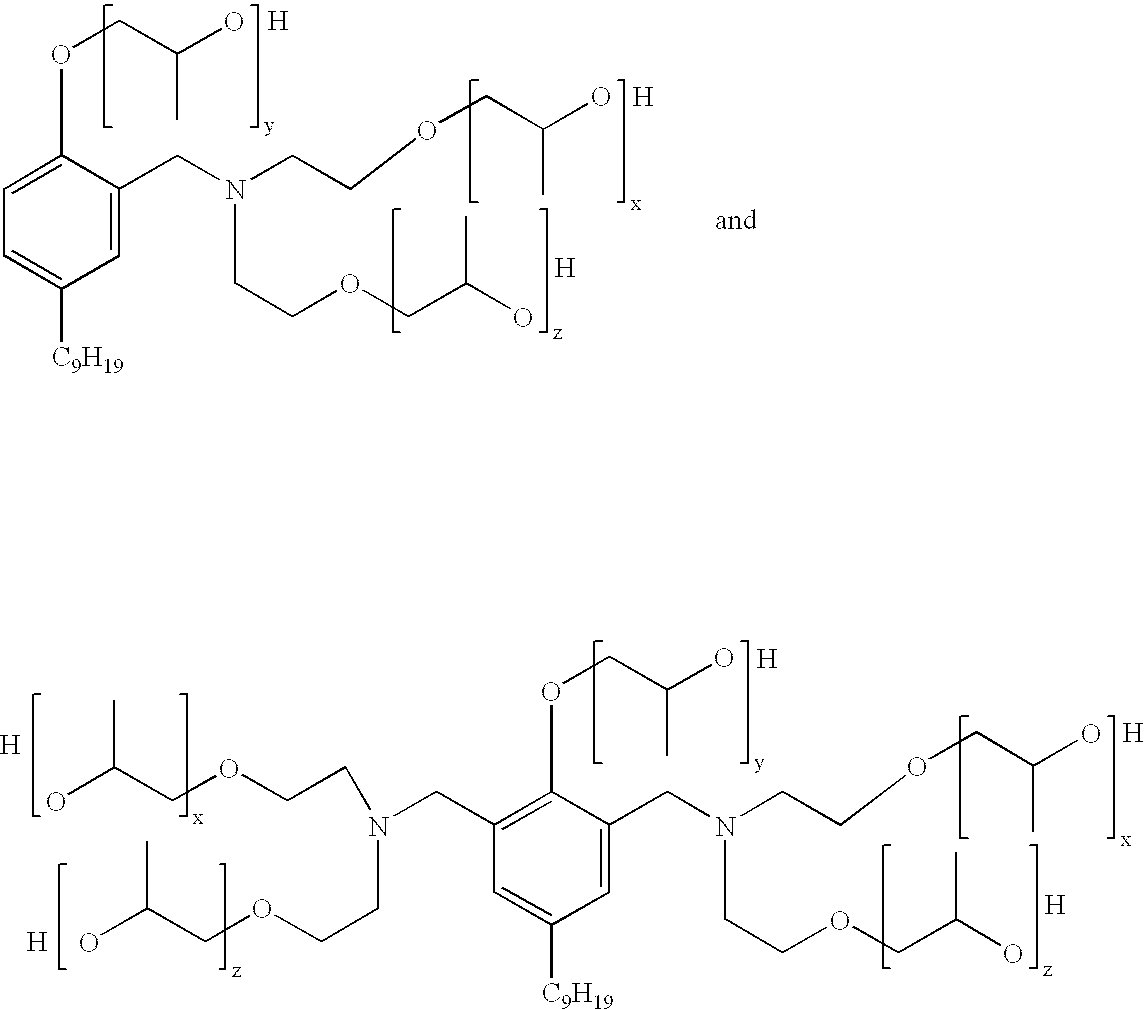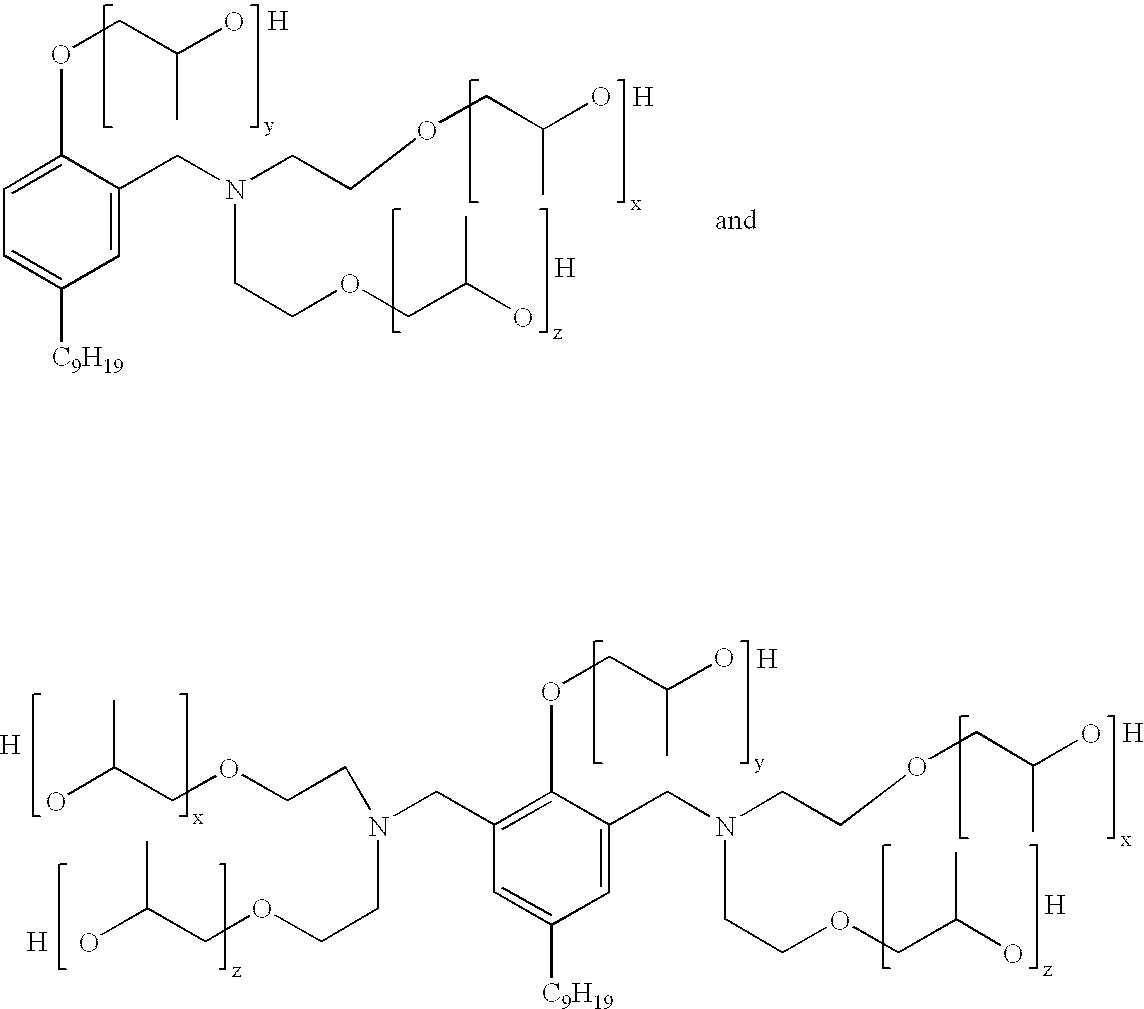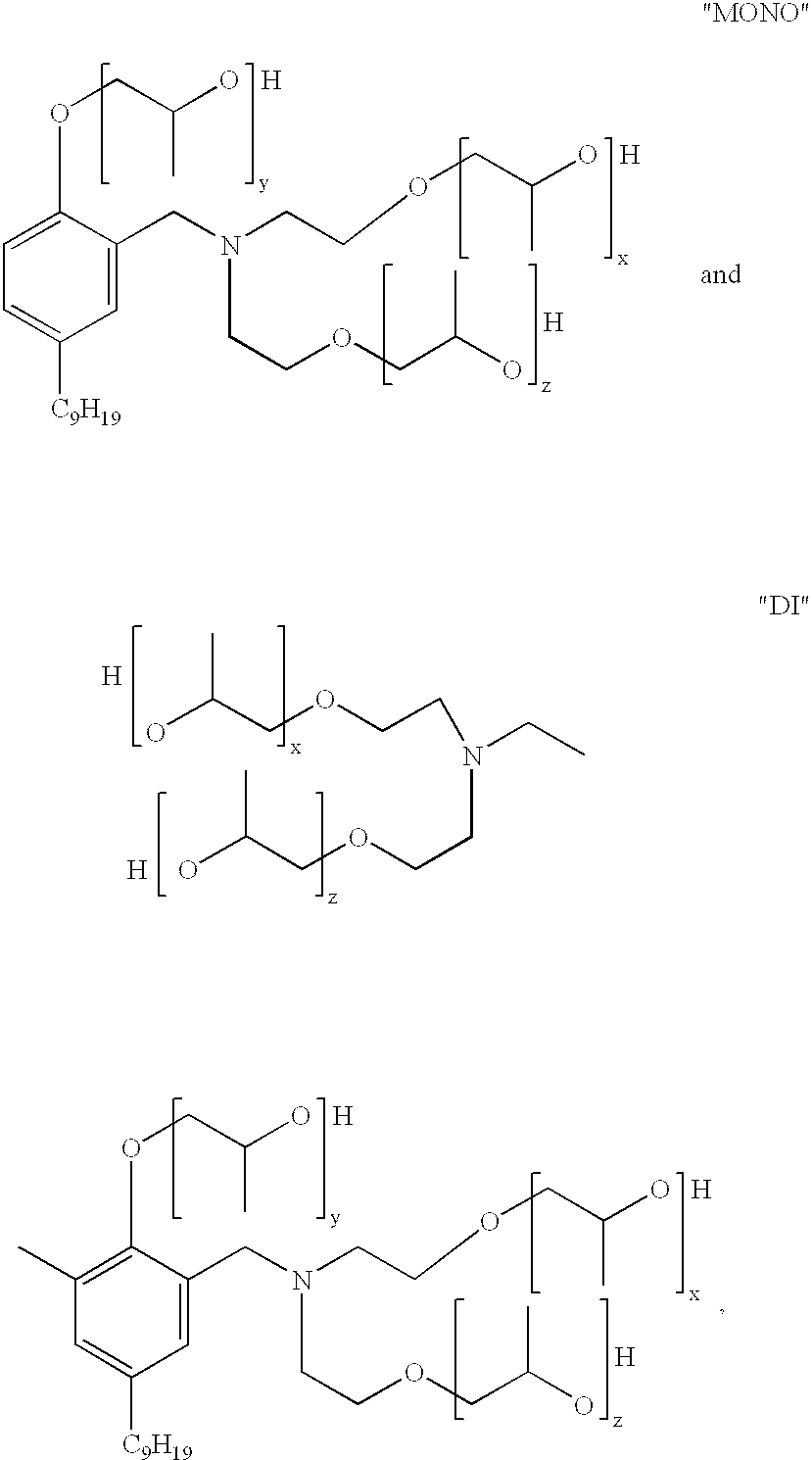Mannich polyols for rigid spray foams
a technology of rigid spray foam and mannich polyols, which is applied in the direction of organic chemistry, coatings, chemistry apparatus and processes, etc., can solve the problems of poor foaming effect, high viscosity, and inability to provide foam with good physical properties,
- Summary
- Abstract
- Description
- Claims
- Application Information
AI Technical Summary
Problems solved by technology
Method used
Image
Examples
example ii
A Mannich condensate prepared as in Example I was catalyzed with DMEA and heated to 88-94.degree. C., then propylene oxide was added over a period of 1.1-2.3 hours while maintaining a reaction temperature of 88-98.degree. C. After propylene oxide addition, the reaction mixture was held at 90-95.degree. C. for 1.5-4.3 hours. Subsequently, the mixture was nitrogen-stripped at atmospheric pressure and 89-95.degree. C. for 15-31 minutes, then it was vacuum-stripped at 90-95.degree. C. for 10-70 minutes. The amounts of reactants used are set forth in Table II.
Ethylene oxide was added to the reaction mixture over a period of 0.1-1.8 hours while maintaining a reaction temperature of 88-98.degree. C. After ethylene oxide addition, the reaction mixture was held at 89-96.degree. C. for 1.2-2.2 hours.
Subsequently, the mixture was nitrogen-stripped at barometric pressure and 89-95.degree. C. for 30-55 minutes, then sampled and analyzed for hydroxyl value. If the hydroxyl value was deemed too hi...
example iii
A Mannich condensate prepared as in Example I was catalyzed with DMEA and heated to 87-89.degree. C., then a blend of propylene oxide and ethylene oxide (comprised of 5 pbw PO and 1 pbw EO) was added over a period of 2.2 hours while maintaining a reaction temperature of 90-100.degree. C. After the mixed oxide addition, the reaction mixture was held at 90-95.degree. C. for 2.0-2.8 hours. Subsequently, the mixture was nitrogen-stripped at atmospheric pressure and 90-95.degree. C. for 9-15 minutes, then it was vacuum-stripped at 89-95.degree. C. for 45-49 minutes. The amounts of reactants used are set forth in Table III.
Ethylene oxide was added to the reaction mixture over a period of 2-10 minutes while maintaining a reaction temperature of 86-96.degree. C. After ethylene oxide addition, the reaction mixture was held at 86-97.degree. C. for 50-98 minutes.
Subsequently, the mixture was nitrogen-stripped at atmospheric pressure and 90-95.degree. C. for 30-34 minutes, then sampled and anal...
examples iv -
Examples IV-XIII below show preparation of foams and foam properties. The foams were prepared using a Gusmer H-2000 spray machine operating at 1500 psig, 120-130F and using a GX-7 spray gun.
The above examples show that Mannich polyol made with all propylene oxide gives good foams while those made with a mixture of propylene oxide and ethylene oxide similar to those in WO 00 / 15690, U.S. Pat. No. 6,281,393 and JP 4173826 gave such poor foams that physical properties could not be measured. Also, the excellent interlaminar adhesion resulting from the polyols of this invention are evidenced by the data set forth for Examples IV and V of Table IV.
These examples show the polyols of this invention can also be used in foams that use both water and an auxiliary-blowing agent.
Another aspect of the present invention is concerned with a Mannich condensate polyol product which comprises a mixture of: ##STR2##
, said mixture being derived from:
a) nonylphenol,
b) formaldehyde,
c) an alkanolamine selec...
PUM
| Property | Measurement | Unit |
|---|---|---|
| Percent by volume | aaaaa | aaaaa |
| Fraction | aaaaa | aaaaa |
| Length | aaaaa | aaaaa |
Abstract
Description
Claims
Application Information
 Login to View More
Login to View More - R&D
- Intellectual Property
- Life Sciences
- Materials
- Tech Scout
- Unparalleled Data Quality
- Higher Quality Content
- 60% Fewer Hallucinations
Browse by: Latest US Patents, China's latest patents, Technical Efficacy Thesaurus, Application Domain, Technology Topic, Popular Technical Reports.
© 2025 PatSnap. All rights reserved.Legal|Privacy policy|Modern Slavery Act Transparency Statement|Sitemap|About US| Contact US: help@patsnap.com



